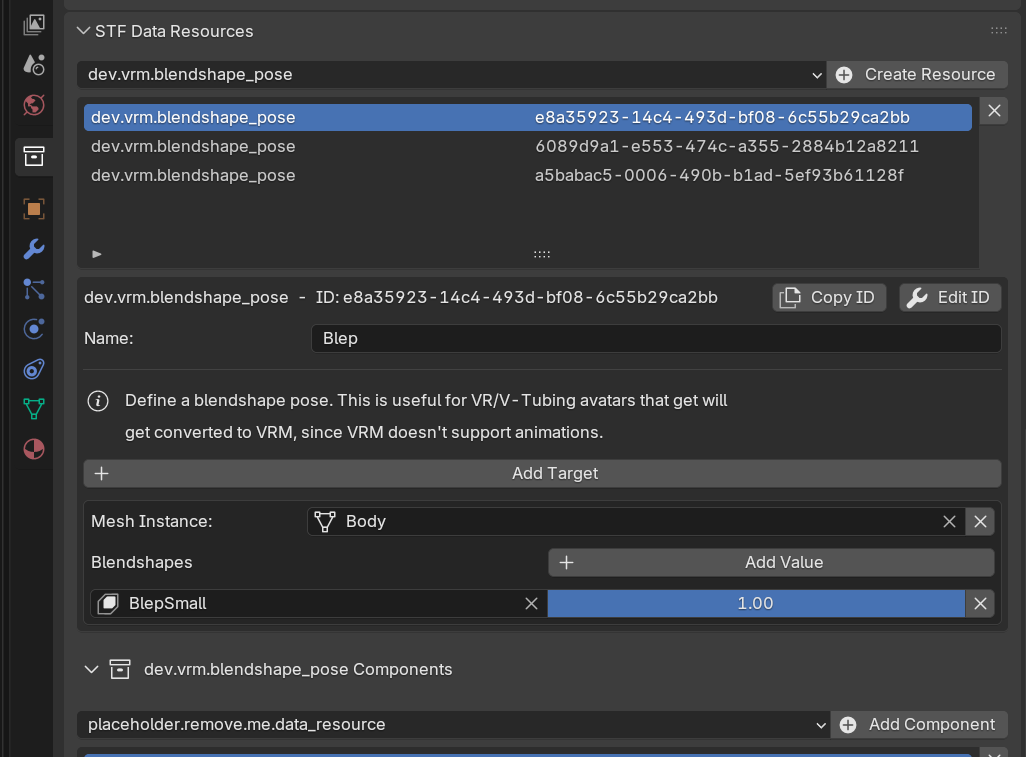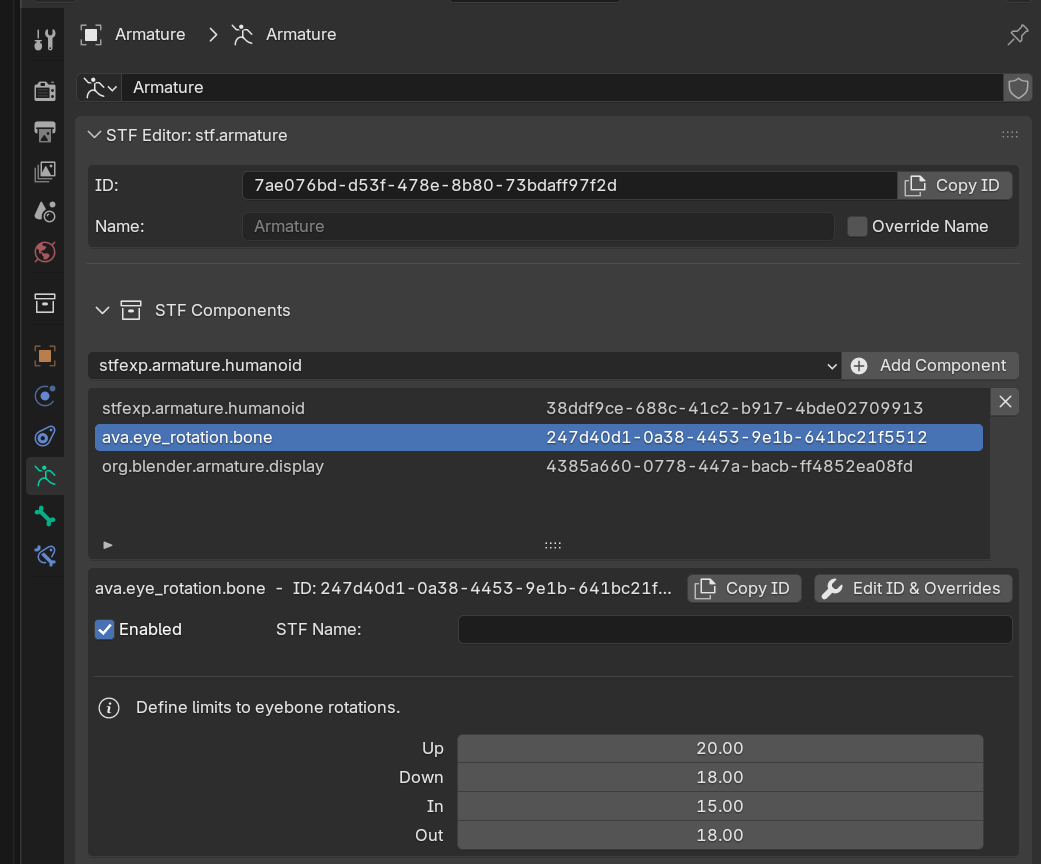STF Concepts in Blender¶
Resources¶
An STF file consists of a hierarchy of arbitrary resources. These resources have a unique ID and a type and a name.
Many types can be natively represented by Blender:
stf.prefabis represented by BlendersCollection.stf.nodeis represented by BlendersObject.stf.meshis represented by BlendersMesh.etc…
Each of these resources gets a properties panel to represent STF specific values, such as the unique ID.
If no ID is set before export, one will be automatically assigned. If STF encounters a duplicate ID, it will reassign it.
By default, the Blender name of a resource will be used. However, it can be optionally overridden.

Resources that Blender doesn’t natively support and aren’t components, can be created & edited in the Data-Resources panel in Collections. These can also have components.

Components¶
In STF, resource have Components. These are ‘sub-resources’ which contain additional information/data for the parent resource.
I.e. the UV-seams on a mesh. They aren’t stored by STF’s stf.mesh resource directly, but can be added as a component.
Some, like stf.mesh.seams, are natively supported by Blender, however most aren’t, as they tend to represent more application-specific information.
Components that are natively supported by Blender, will be automatically exported.
Components that aren’t natively supported, can be added & edited in the Components section of each resources’ panel.
